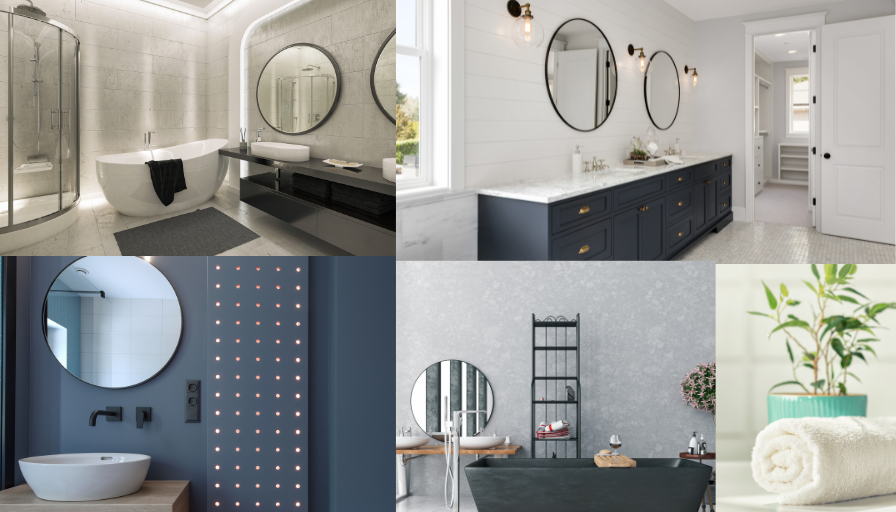Incorporating Different Design Styles into Your Home
- Leo Kruger
- Jun 24, 2024
- 3 min read
Creating a cohesive and visually pleasing home that incorporates multiple design styles can be an exciting yet challenging endeavour. The key to successfully blending various design styles lies in achieving balance and harmony, ensuring that different elements complement each other rather than clash. Here are some practical tips and strategies to help you incorporate various design styles into your home:
1. Understanding Your Preferred Styles
Before diving into the design process, take the time to identify the styles you are drawn to. Some popular design styles include:
- Modern: Characterized by clean lines, minimalism, and a neutral colour palette.
- Traditional: Known for its classic furniture, ornate details, and rich colours.
- Bohemian: Features eclectic elements, vibrant colours, and a mix of patterns and textures.
- Industrial: Incorporates raw materials like exposed brick, metal, and wood, with a focus on functionality.
- Scandinavian: Emphasizes simplicity, functionality, and a connection to nature, often featuring light colours and natural materials.
- Mid-Century Modern: Combines retro elements with modern functionality, characterized by clean lines, organic shapes, and a mix of materials.
2. Establishing a Neutral Base
When blending multiple styles, it’s essential to start with a neutral base. Choose neutral colors for your walls, floors, and large furniture pieces. This approach creates a cohesive backdrop that allows different styles to shine without overwhelming the space. Neutral tones like white, beige, grey, and soft pastels can help unify diverse elements and provide a calming atmosphere.
3. Layering with Textures and Patterns
One of the easiest ways to blend different design styles is by layering textures and patterns. For example, you can combine a modern leather sofa with traditional Persian rugs, or mix bohemian throw pillows with a Scandinavian-inspired armchair. Textiles such as cushions, rugs, and curtains offer an excellent opportunity to introduce various patterns and textures, creating a rich and inviting space.
4. Balancing Proportions and Scale
To ensure that different design styles coexist harmoniously, pay attention to the proportions and scale of your furniture and decor. Avoid overcrowding a room with too many large pieces or overwhelming it with small items. Instead, aim for a balanced mix of sizes and shapes. For example, pair a large, traditional dining table with sleek, modern chairs, or balance a bulky industrial coffee table with lightweight bohemian accents.
5. Unifying Through Colour
A consistent colour palette can help tie together diverse design elements. Select a few key colours and repeat them throughout the space in various ways. This repetition creates visual continuity and helps different styles feel connected. For instance, if you have a vibrant bohemian rug, incorporate its colours into modern artwork, traditional vases, or Scandinavian throws.
6. Highlighting Focal Points
Identify focal points in each room to draw attention and create a sense of order. A focal point could be a statement piece of furniture, a bold artwork, or a unique architectural feature. By emphasizing these focal points, you can guide the eye and make the room feel intentional and thoughtfully designed. For example, a large industrial pendant light can serve as a focal point in a dining room with a mix of traditional and modern elements.
7. Mixing Furniture Styles
Don’t be afraid to mix furniture from different design styles. The key is to find commonalities that link the pieces together, such as similar colours, materials, or shapes. For example, you can pair a sleek modern sofa with a vintage mid-century coffee table or combine an industrial bookshelf with a traditional armchair. By finding these common threads, you create a cohesive look that celebrates diversity.
8. Personalizing with Accessories
Accessories are a great way to infuse personality and blend different design styles. Items such as artwork, lighting, vases, and plants can add character and enhance the overall aesthetic. Mix and match accessories from various styles to create a curated, lived-in feel. For instance, a modern space can be softened with traditional artwork and bohemian textiles, while an industrial setting can be warmed up with Scandinavian-inspired plants and pottery.
9. Experimenting and Evolving
Incorporating multiple design styles into your home is an ongoing process. Don’t be afraid to experiment and make changes as you discover what works best for you. Over time, your space will evolve and reflect your personal style more accurately. Embrace the journey and enjoy the creative process of blending different design styles into a harmonious and unique home.
Tsena Fela Furnishers - Leo Kruger




Comments